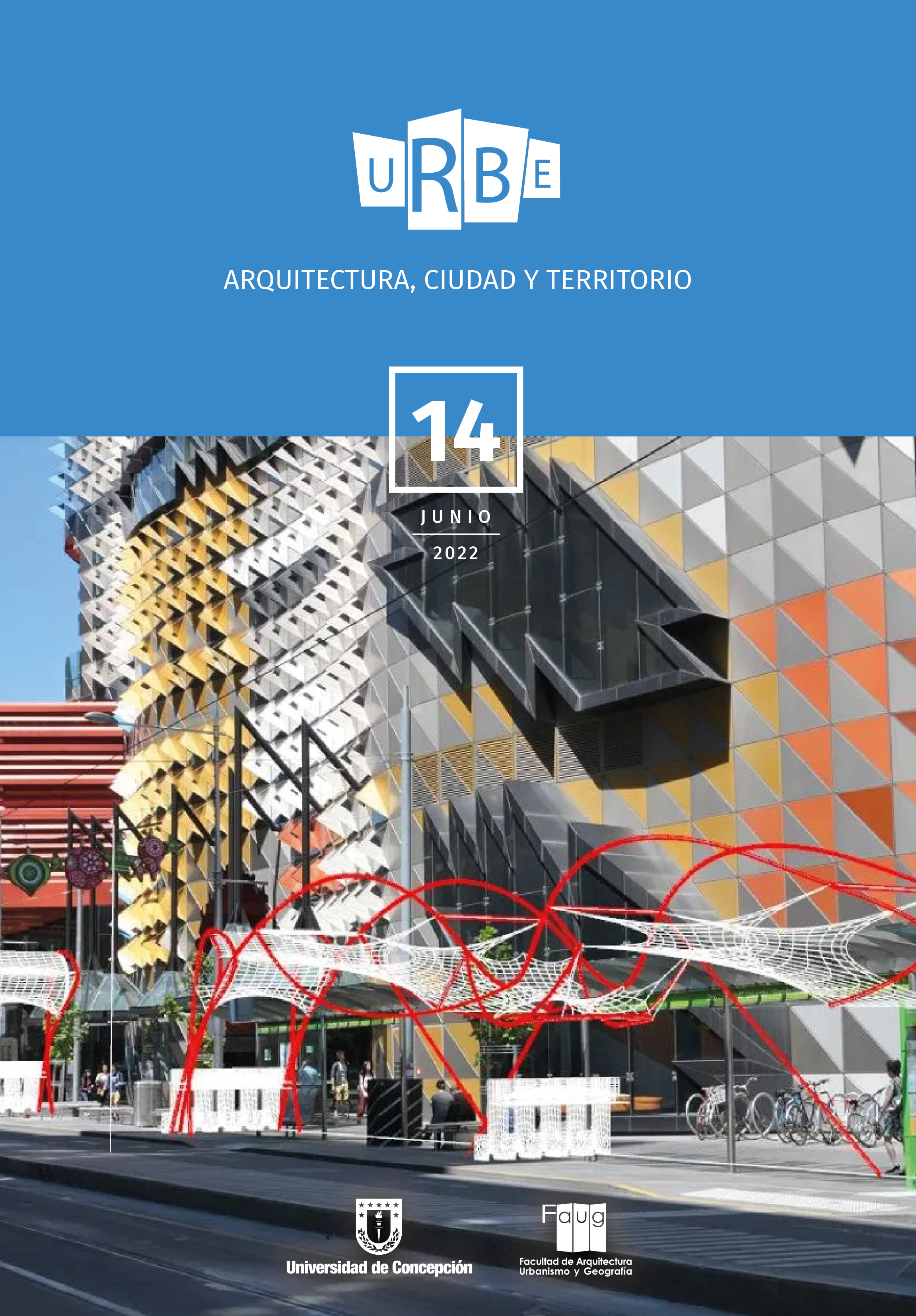Aerodynamic thresholds as a design strategy to mitigate the effects of wind in public space
DOI:
https://doi.org/10.29393/UR14-1UARM10001Keywords:
Urban Aerodynamics, CFD simulation, urban furniture design, environmental comfortAbstract
Wind is a factor that can open new exploration areas for funtional and morphological purposes, in the architectural design discipline. In these areas is possible to develop new design strategies to improve the levels of enviromental comfort. This article presents the assessment and use of three independent studies on mitigation and control strategies for wind comfort, collecting and combining some design rules that they propose, which are based on their aerodynamic features. These are the studies of the aerodynamic “slot” porous screens and fuselages. Thus, a combined and strategic use in three technical-architectural elements is proposed as a rule to design a protection canopy for areas of public space with a high level of discomfort caused by the wind and with lack of other mitigating measures. The use of these aerodynamic principles allows to design a semi-open structure, making it less cumbersome, less invasive and lighter in for pedestrian areas. The term “wind thresholds” is coined to identify the effect of a deflecting and protective gust of wind in the form of a dome or bubble, which is generated by the combination of these elements. The effectiveness of this strategy for wind control is tested with computational fluid dynamics models, seeking to verify that there is an effective mitigation and deflection of the wind that increases the protection zone.
Downloads
References
Adamek, K., Vasan, N., Elshaer, A., English, E., y Bitsuamlak, G. (2017). Pedestrian-level wind assessment through city development: A study of the financial district in Toronto. Sustainable Cities & Society, 35, 178–190. https://doi.org/10.1016/j.scs.2017.06.004
Aynsley, R. M., Melbourne, W. H., y Vickery, B. J. (1977). Architectural aerodynamics. Applied Science Publishers.
Aynsley, R. M. (1999). Shape and flow: The essence of architectural aerodynamics. Architectural Science Review, 42(2), 69–74. https://doi.org/10.1080/00038628.1999.9696854
Blocken, B., Roels, S., y Carmeliet, J. (2004). Modification of pedestrian wind comfort in the Silvertop Tower passages by an automatic control system. Journal of Wind Engineering and Industrial Aerodynamics, 92(10), 849-873. https://doi.org/10.1016/j.jweia.2004.04.004
Bureau of M, A. G. (2013). Climate statistics for Australian locations. http://www.bom.gov.au/climate/averages/tables/cw_086071_All.shtml
Burry, J. (2013). Designing the Dynamics. High-performance sailing and real-time feedback in design. Melbourne Books.
Casanueva, M. (2003). De los campos de abstracción y los elementos para una arquitectura experimental. Universidad Finis Terrae.
Gandemer, J. (1981). The aerodynamic characteristics of windbreaks, resulting in empirical design rules. Journal of Wind Engineering and Industrial Aerodynamics, 7(1),15–36. https://doi.org/10.1016/0167-6105(81)90065-9
Gandemer, J. (1978). Building Research Translation. Discomfort due to wind near buildings: aerodynamic concepts. Department of Commerce, National Bureau.
Gandemer, J. (1979). Wind Shelters. Journal of Industrial Aerodynamics, 4, 371–389. https://doi.org/10.1016/0167-6105(79)90013-8
Hensel, M. (2013). Performance-Oriented Architecture: Rethinking Architectural Design and the Built Environment. John & Wiley Sons.
Hensel, M., y Menges, A. (2006). Morpho-ecologies. Architectural Association.
Kaijima, S., Bouffanais, R., Willcox, K., y Naidu, S. (2013). Computational fluid dynamics for architectural design. Architectural Design, 83(2),118–123. https://doi.org/10.1002/ad.1566
Kang, G., Kim, J., Choi, W. (2020). Computational fluid dynamics simulation of tree effects on pedestrian wind comfort in an urban area. Sustainable Cities and Society, 56. https://doi.org/10.1016/j.scs.2020.102086
Moya, R. (2015). Wind analysis in the early design stage: an empirical study of wind visualisation techniques for architects. Tesis doctoral. University of Melbourne.
Serteser, N., y Karadag, I. (2018). Design for improving pedestrian wind comfort: a case study on a courtyard around a tall building. Architectural Science Review, 61(6), 492–499. https://doi.org/10.1080/00038628.2018.1492899
Millar, R. y Gough, D. (03 de abril de 2013). The wall, and why it collapsed. The Age. https://www.theage.com.au/national/victoria/the-wall-and-why-it-collapsed-20130402-2h56t.html
Tsichritzis, L., y Nikolopoulou M. (2019). The effect of building height and façade area ratio on pedestrian wind comfort of London. Journal of Wind Engineering and Industrial Aerodynamics, 191, 63–75. https://doi.org/10.1016/j.jweia.2019.05.021
Ureta, A. (2007). El proyecto de la escuela naval del instituto de arquitectura de Valparaíso: investigación y arquitectura 1956-57. Tesis de magíster. Pontificia Universidad Católica de Chile.
Wisse, J. A. (1988). A Philosophy for Teaching Windin the Built Enviroment. Energy and Buildings, 11, 157–161.
Published
How to Cite
Issue
Section
Copyright (c) 2022 Rafael Moya Castro

This work is licensed under a Creative Commons Attribution 4.0 International License.
Revista URBE. Arquitectura, Ciudad y Territorio tiene licencia de Creative Commons Attribution 4.0 International (CC BY 4.0) y debe citarse correctamente.









